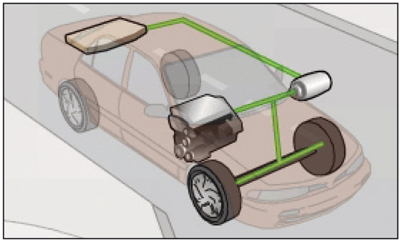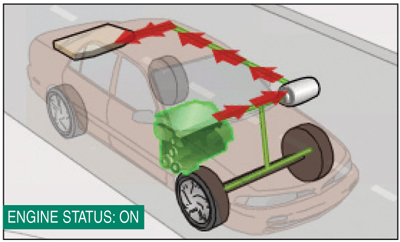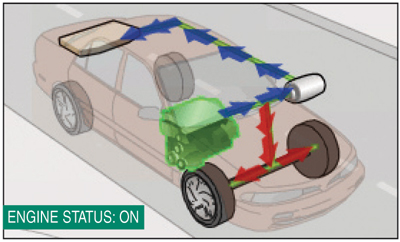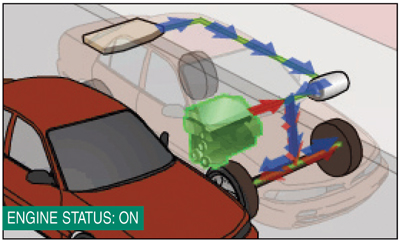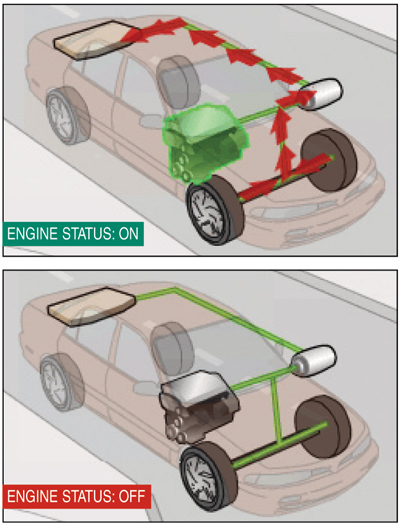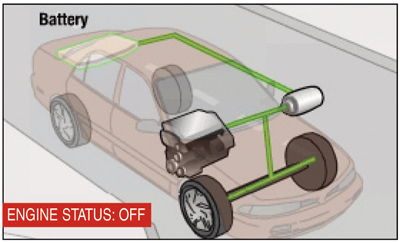|
|
HOW HYBRIDS WORKU.S. Department of Energy
Hybrid-electric vehicles (HEVs) combine the benefits of gasoline engines and electric motors and can be configured to obtain different objectives, such as improved fuel economy, increased power, or additional auxiliary power for electronic devices and power tools. Some of the advanced technologies typically used by hybrids include
Hybrid-electric vehicles combine the benefits of gasoline engines and electric motors to provide improved fuel economy. The engine provides most of the vehicle's power, and the electric motor provides The electric power for the motor is generated from regenerative braking and from the gasoline engine, so hybrids don't have to be "plugged in" to an electrical outlet to recharge.
When the vehicle is started, the gasoline engine "warms up." If necessary, the electric motor acts as a generator, converting energy from the engine into electricity and storing it in the battery.
The gasoline engine powers the vehicle at cruising speeds and, if needed, provides power to the battery for later use.
During heavy accelerating or when additional power is needed, the gasoline engine and electric motor are both used to propel the vehicle. Additional power from the battery is used to power the electric motor as needed.
Regenerative braking converts otherwise wasted energy from braking into electricity and stores it in the battery. In regenerative braking, the electric motor is reversed so that, instead of using electricity to turn the wheels, the rotating wheels turn the motor and create electricity. Using energy from the wheels to turn the motor slows the vehicle down. If additional stopping power is needed, conventional friction brakes (e.g., disc brakes) are also applied automatically.
When the vehicle is stopped, such as at a red light, the gasoline engine and electric motor shut off automatically so that energy is not wasted in idling. The battery continues to power auxillary systems, such as the air conditioning and dashboard displays.
© 2013 TLC Magazine Online, Inc. |

